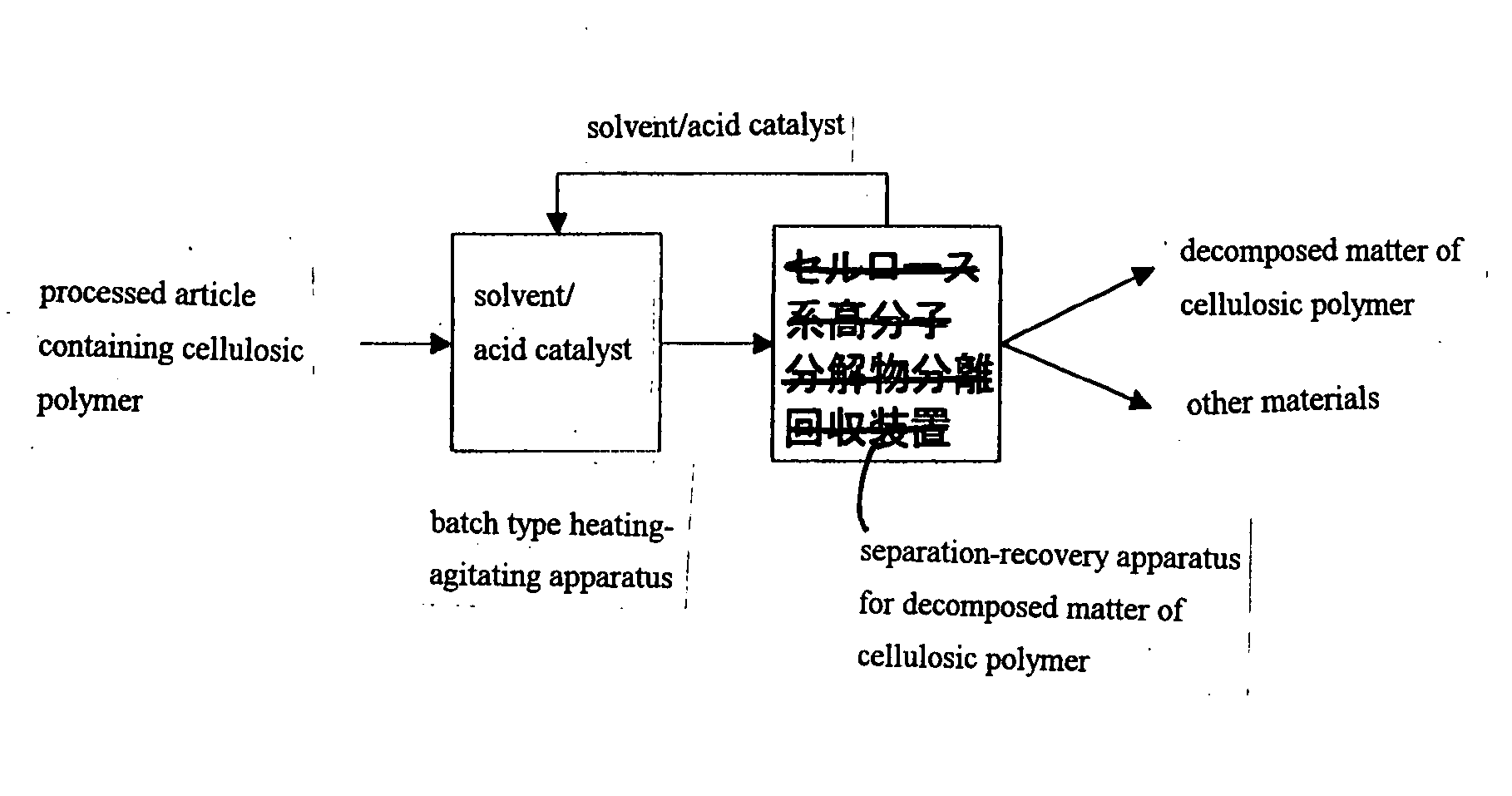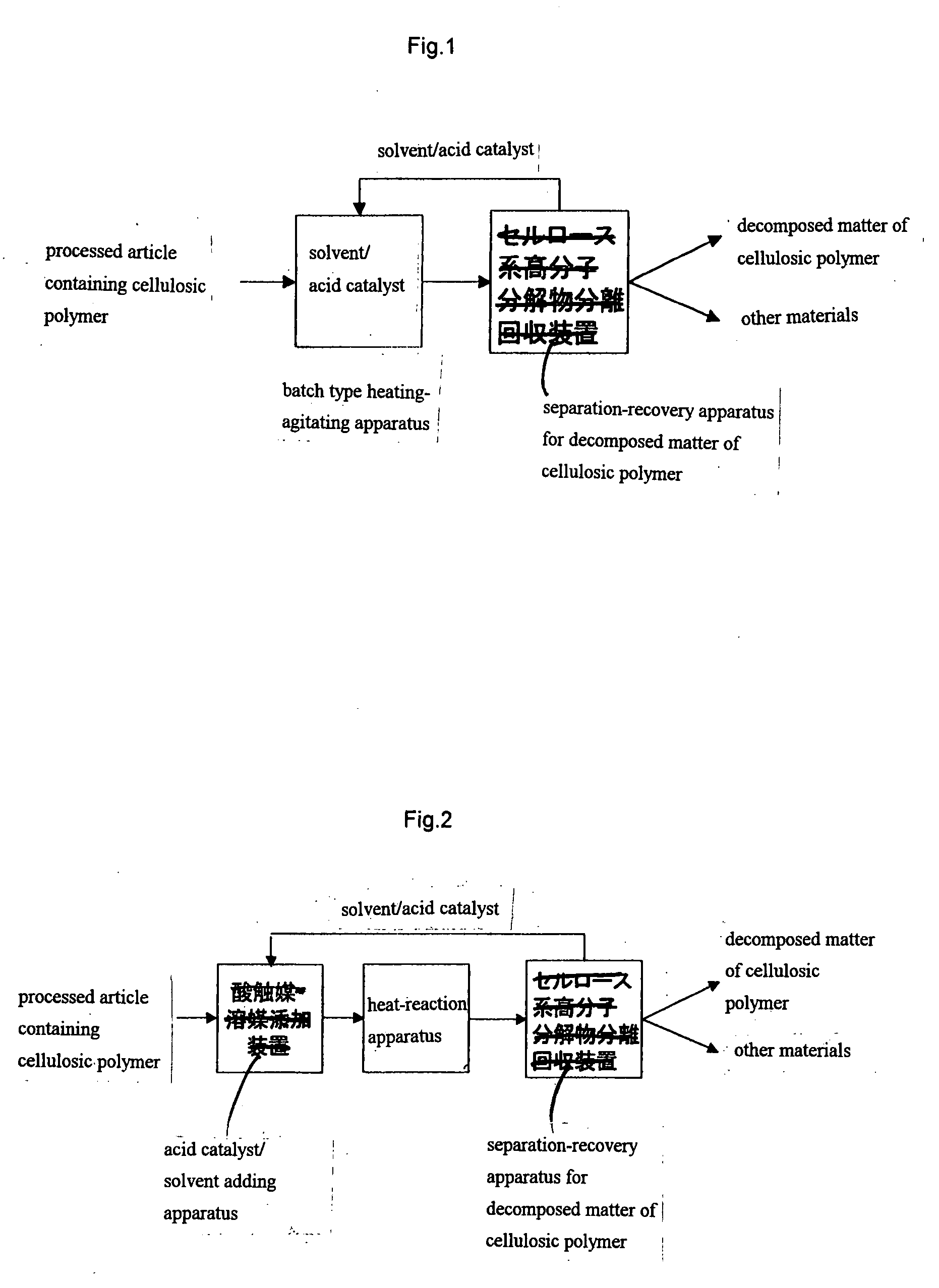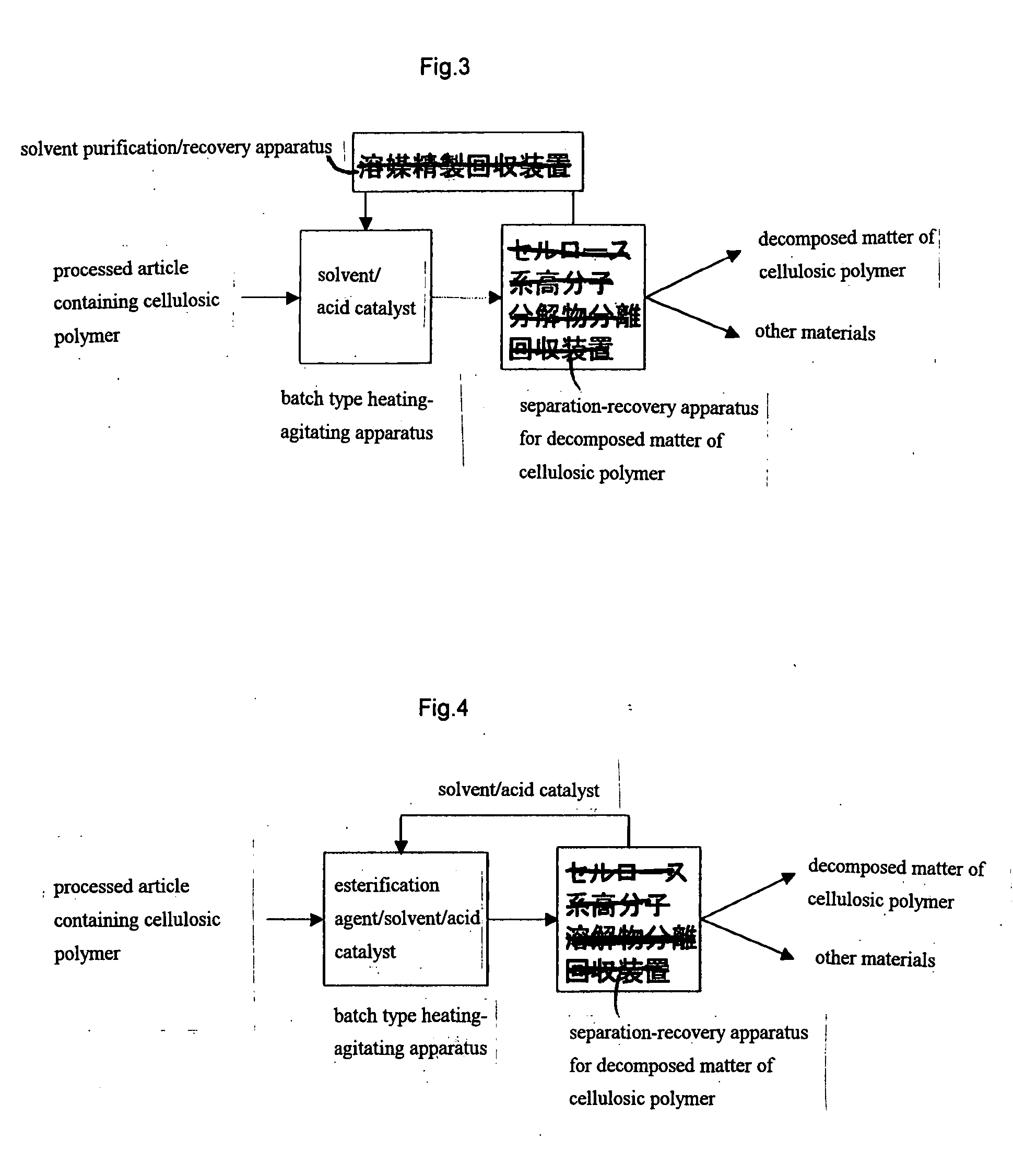Method for Selective Separation of Cellulosic Polymer and Apparatus Therefor
a cellulosic polymer and selective separation technology, applied in the direction of sugar derivates, chemical/physical/physical-chemical processes, organic chemistry, etc., can solve the problem of difficult to separate cellulose in a simple manner, and achieve the effects of saving resources, preventing global warming, and simple process
- Summary
- Abstract
- Description
- Claims
- Application Information
AI Technical Summary
Benefits of technology
Problems solved by technology
Method used
Image
Examples
example 1
[0077]A textile containing cotton and polyester in respective amounts of 1.5 g and 1.0 g was dispersed in 30 mL of decane which contains 0.2 g of ZnBF4 and 0.2 g of tetrabutyl ammonium chloride, and then heated to 120° C. As a result, the cotton in the textile was rapidly decomposed, and there were obtained polyester fabric and a white-colored suspension, and the polyester fabric alone could be separated by a treatment with a saturated aqueous solution of sodium carbonate.
example 2
[0078]A textile containing cotton and polyester in respective amounts of 1.5 g and 1.0 15 g was dispersed in 30 mL of toluene which contains 0.2 g of ZnBF4 and 0.2 g of tetrabutyl ammonium chloride, and then heated to 115° C. As a result, the cotton in the textile was rapidly decomposed, and there were obtained polyester fabric and a white-colored suspension, and the polyester fabric alone could be separated by a treatment with a saturated aqueous solution of sodium carbonate.
example 3
[0079]0.69 g of a knitted textile containing cotton and polyester in a ratio of 1:1 were immersed in concentrated hydrochloric acid, then put and agitated in 80 mL of toluene at 95° C. and rinsed with water. As a result, the textile could be separated into a polyester fabric and white powder.
PUM
| Property | Measurement | Unit |
|---|---|---|
| temperature | aaaaa | aaaaa |
| temperature | aaaaa | aaaaa |
| temperature | aaaaa | aaaaa |
Abstract
Description
Claims
Application Information
 Login to View More
Login to View More - R&D
- Intellectual Property
- Life Sciences
- Materials
- Tech Scout
- Unparalleled Data Quality
- Higher Quality Content
- 60% Fewer Hallucinations
Browse by: Latest US Patents, China's latest patents, Technical Efficacy Thesaurus, Application Domain, Technology Topic, Popular Technical Reports.
© 2025 PatSnap. All rights reserved.Legal|Privacy policy|Modern Slavery Act Transparency Statement|Sitemap|About US| Contact US: help@patsnap.com



